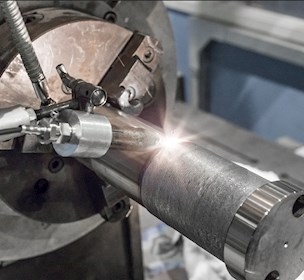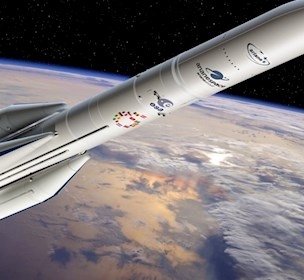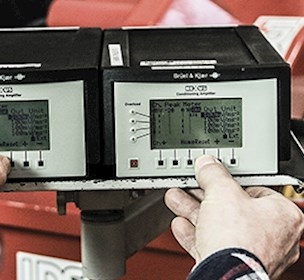Space technology: Challenges for materials, electronics, and electrical products
Accidents in the aerospace industry can be extremely costly, and in the worst-case scenario, human lives can be lost. To avoid this, the industry has stringent requirements for materials and equipment.
In recent years, several new companies focused on sending equipment into space have appeared in the field of space technology. Development is progressing rapidly, and the trend is towards making everything lighter and cheaper. This trend imposes serious demands on the materials and tests to ensure reliability.
For more than two decades, FORCE Technology has been a leading force for technological change, setting new standards for space technology with rocket nozzle designs developed for the ESA's Ariane 6 launcher. The launcher industry is now focusing on additive manufacturing as a key technology in the design and manufacturing of engines. FORCE Technology is actively involved in developing technology for quality control by the use of our expertise in Non Destructive testing. We also played a small part in NASA's Perseverance rover on Mars and assisted with compliance testing of electronic equipment to be used by ISS commander Andreas Mogensen on his recent ESA-Huginn mission to the International Space Station.
We assist manufacturers and sub suppliers of:
- Launch vehicles
- Satellites
- Habitats
- Rovers
- Robots
- Measurement instruments
- Electronic modules
- Batteries
and other kinds of equipment to develop and test components and systems, ensuring that they can withstand the extreme pressures, vibrations, and temperatures they are exposed to during launch, in space, and during landing.
Manufacturing components for the aerospace industry
When the components need to be lighter and cheaper, attempts are made to make the material itself thinner. It imposes serious requirements on the material. The strength of joints and welds must be maximised, and components must be able to withstand very high and very low temperatures as well as mechanical impact without compromising their performance.
You can draw on our deep professionalism and great breadth in areas such as:
- Laser welding
- 3D printing and additive manufacturing
- NDT, Non-destructive testing
- Quality assessment, e.g., via laser scanning, ultrasound, and X-ray
- Development of quality assurance tools
- Prototype production and testing
- Manufacturing process development
- Material optimisation (e.g., for superalloys)
- Evaluation of detected errors and collected data
- Third-party competency development.
Environmental testing for electronics and electrical products, including EMC testing
Before electronics and electrical equipment is sent into space, it is subjected to an extensive series of tests to ensure that it will function in the environments to which it will be exposed.
FORCE Technology tests both classic space products and "new space" products, which are gaining more and more ground in the aerospace industry. For instance, satellite development has progressed from microsatellites to nanosatellites, designed for high-volume launches into low Earth orbits.
One thing that sets new space apart is the use of COTS (commercial, off-the-shelf) components, which are not certified for use in space and must be thoroughly tested as a result. This means that extreme tests must be developed specifically for new space, in order to effectively verify a product's ability to withstand a space launch and operate in space.
Assistance is available for documenting the performance of your products in our many facilities for:
Related content

Laser welding is made available to the Danish industry
/Facility
High-precision laser welding for various materials, thicknesses, and sizes at largest laser centre

Ariane 6 takes off with Danish designed rocket nozzle
/Case
Rocket nozzle for Ariane 6 is made with fully automatic laser welding and sensor to guide the laser.

Explore our EMC testing facilities
/Facility
Discover our advanced EMC testing facilities designed to accommodate a range of electronic products.

Mechanical testing – vibra-tion, shock, transport etc.
/Facility
Mechanical testing of your products and components. Vibration, shock, transport testing etc.

Extreme testing for new space products
/Article
Development of nanosatellites is a serious challenge that calls for extreme testing.


